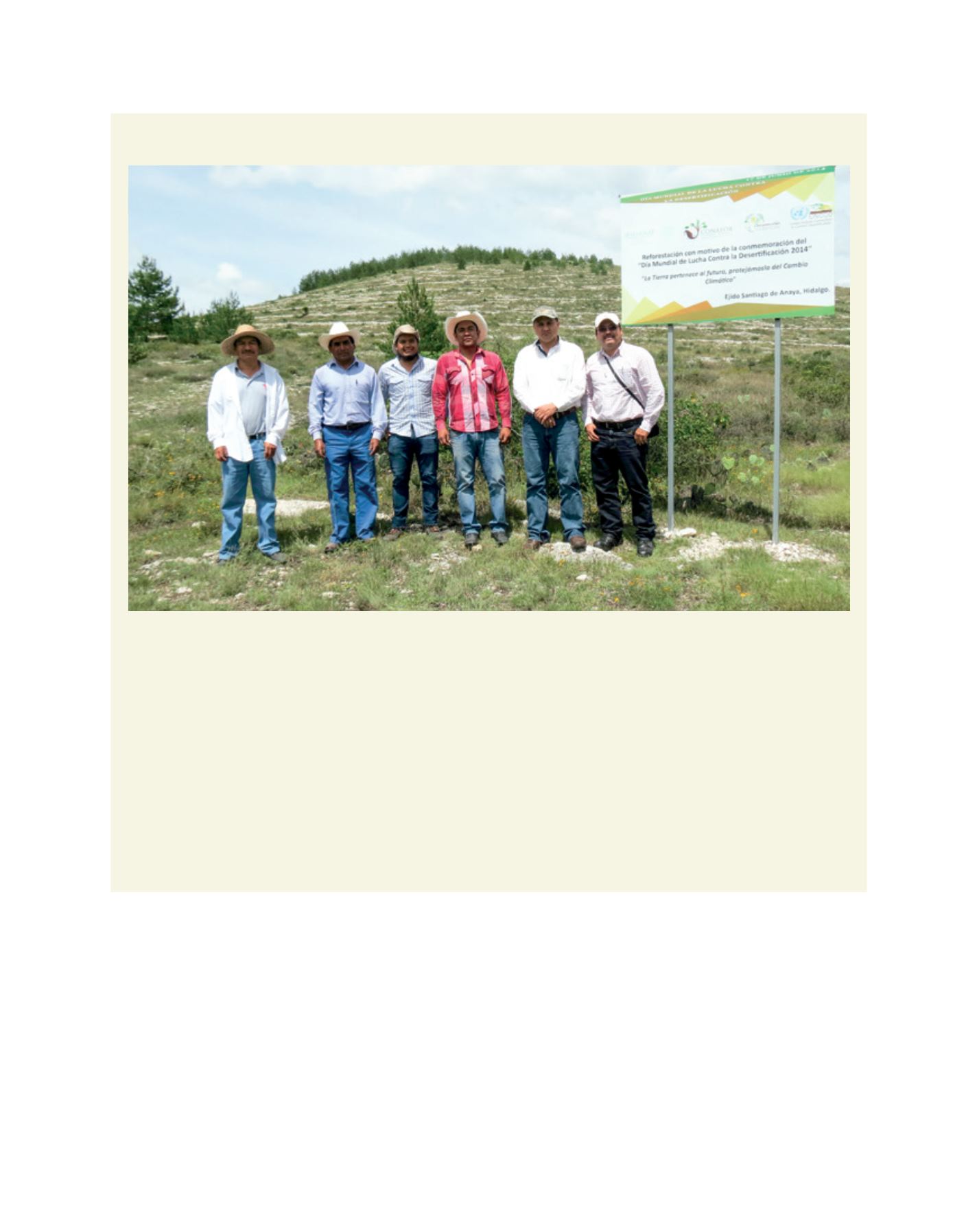

[
] 70
forest lands, as well as for carrying out activities for soil
conservation and restoration, reforestation and fertilization,
and protection and maintenance of reforested areas within a
three-year implementation period.
An innovative element of this programme is the payment
granted to landowners as compensation for the land opportu-
nity cost. This ensures landowners will have no reduction in
income while reforested areas are established, and encourages
actions for protection and maintenance in order to ensure a
greater survival of planted trees.
An important aspect of forest resources in Mexico is the
collective nature of land tenure. Ejidos and communities
(both forms of collective ownership) own 62.6 million
hectares of forests, rainforest and arid forest vegetation,
equivalent to 45 per cent of the total forest area of the
country. Management of common-use forest resources
in Mexico has been analysed in various studies, which
concluded that in many cases these have been managed in
a sustainable way providing various social, economic and
environmental benefits to the population, especially for the
most vulnerable (indigenous people, women and the poor).
CONAFOR strengthens forest governance and promotes
mechanisms for social engagement to support planning,
consultation and dialogue, ensuring representation of the
Community involvement in Santiago de Anaya
Santiago de Anaya is located 140 kilometres north of Mexico City in the
Mezquital Valley, which is characterized by its semi-desert climate.
This was once an important mining region, but today the population
is engaged in rain-fed agriculture and extensive livestock farming. High
levels of desertification have been caused by overexploitation of its
timber resources to supply the mining industry and by overgrazing.
The community has ‘Otomi’ origins, a native indigenous group organized
through ‘mayordomias’ (stewardships) and ‘faenas’ (tasks) to perform
welfare duties, including those related to protection and conservation.
Reforestation and soil conservation activities in the region started
in the 1980s. In 1998 a community development programme was
launched to strengthen organization, training, technical assistance and
inter-agency support, in order to create a transferrable model for the
protection, conservation and improvement of the natural environment.
Through a model of participatory planning, areas were defined for
reforestation; plant species, planting methods, soil and water conservation
activities were determined; and projects to diversify productive activities
were identified. Soil was prepared in contour lines using machinery, and
individual terraces, trenches, dikes, stone dams, gabion retaining walls
or other land structures for water storage were constructed, allowing an
increase in the survival of planted trees to 80 per cent.
Thanks to various institutional programmes over the past three
decades, a semi-compact area above 1,800 hectares was restored with
the plantation of introduced and native forest species. Currently, pine
trees reach up to 8 metres high. The soil has been stabilized from erosion
and at least three water springs are maintained in the restored areas.
The conservation of wild flora and fauna, increased infiltration of
water, soil conservation, use of non-timber forest products, lower
consumption of wood through the use of efficient stoves, improved
landscape and wildlife management areas are some of the benefits
obtained by the community.
The achievements and organizational model for community
involvement provide an example for replication on a larger scale, and
the community was awarded the National Forestry Merit Prize in 2005.
The local community in Santiago de Anaya were involved in planning and carrying out conservation and improvement measures
Image: National Forestry Commission archive
L
iving
L
and
















